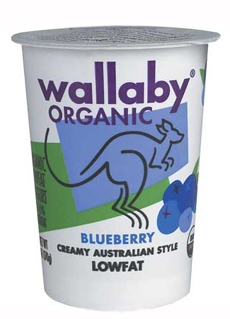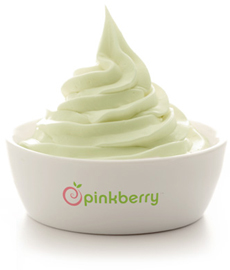Yogurt GlossaryYogurt Or Yoghurt, Speak The Language Of These Cultures
This is Page 2 of a three-page glossary of yogurt facts and terms. Let us know if you’d like to suggest additional yogurt terms or definitions. Also see our Probiotics Glossary and Glossary Of Organic Terms, plus more than 80 delicious food glossaries. This material is copyrighted and cannot be reproduced in whole or in part. |
||
ACIDOPHILIS See L. acidophilus. ACTIVE YOGURT CULTURES or LIVING YOGURT CULTURES In some techniques of yogurt-making the bacteria survive processing, so packages will be thusly labeled. In other techniques, the milk is pasteurized again after the cultures are added, so the bacteria are destroyed. These packages are labeled “heat-treated after culturing.” AUSTRALIAN-STYLE YOGURT A term we’ve only come across once, from Wallaby Yogurt, a California company. The founders were inspired by the yogurts they “discovered” while traveling in Australia. We find no discernable difference from the already established terms for this creamy style of yogurt with fruit blended in (as opposed to sundae-style, fruit at the bottom of the cup): custard-style, French-style or Swiss-style. (The company also makes a fruit-at-the-bottom line.)
|
 The only “Australian-style” yogurt we’ve come across. Photo courtesy Wallaby Yogurt. |
|
BACTERIA Yogurt is made by curdling milk with purified cultures of two special bacteria, Lactobacillus bulgaricus and Streptococcus thermophilus. The other commonly-used strains are Bifidus, L. Acidophilus and S. Thermophilis. In an attempt to make their products sound more exclusive, some large manufacturers are creating strains with proprietary names, such as Dannon’s L. casei Immunitas™ and Bifidus Regularis™. These strains have no greater functional powers than the publicly-available bacteria. As you may deduce from the names “Immunitas” and “Regularis,” this is product marketing razzelis dazzelis. BIFIDUS A strain of beneficial bacteria often included in probiotic cultures. See also probiotic. BUTTERMILK Buttermilk is related to yogurt in that it is a fermented (cultured) dairy product. Originally, buttermilk was the liquid left over from churning butter from cream, now, called traditional buttermilk. Cultured buttermilk is made by adding lactic acid bacteria to cow’s milk. Either method produces a tart-flavored milk, due to the presence of the lactic acid in the milk; buttermilk is also thicker than plain milk, although traditional buttermilk is thinner than cultured buttermilk. Rich buttermilk is enjoyed as a beverage and used in batters (breading, cake and pancake, for example). See also kefir. CULTURED Made with live bacteria cultures. All yogurt is cultured, and thus is more digestible than milk for some people with lactose intolerance. The live cultures create lactase, an enzyme in which lactose-intolerant people are deficient; and aid in the digestion of casein, a milk protein. |
||
CUSTARD-STYLE YOGURT Yogurt with a custard-like consistency in which the fruit is already mixed in and distributed evenly throughout. Also called French style and Swiss style. Many products called Custard- French- and Swiss-style are marketing inventions, “laboratory products,” whether they are artificially flavored and colored or naturally colored, thickened, stabilized and preserved to a pudding-like hardness. Real yogurt is silky and velvety (except for Greek style, which is deliberately thicker). While the ancient Greeks (and the original inventors of yogurt, no doubt) ate fruit with yogurt, the yogurt they ate was a supple product, not stiffened to hold its form. Even though ingredients such as agar, carrageenan, gelatin, guar gum, locust bean gum and other additives are “natural” and enable products to be called 100% natural, look for products that have none of these.
|
 Custard-style yogurt is creamy and pudding-like. Photo by d2xed | IST. |
|
|
||
FROZEN YOGURT Yogurt that has been prepared in the style of hard or soft-serve ice cream. Generally not a healthy alternative to other treats, it is parallel to ice cream in sugar and fat content. Some brands also have added whole milk or cream for richness. Freezing destroys most of the beneficial, live bacteria. While the FDA has standards for bacterial cultures required to make refrigerated yogurt, no standard of identity exists for frozen yogurt products. They may or may not contain live and active cultures: Read the label, along with this information on live and active cultures in frozen yogurt.
|
 Frozen yogurt can be hard or soft serve (above). Photo of green tea frozen yogurt courtesy Pinkberry. |
|
|
Continue To Next Glossary Page, Terms G To N |
||
© Copyright 2005-2026 Lifestyle Direct, Inc. All rights reserved. All images are copyrighted to their respective owners.